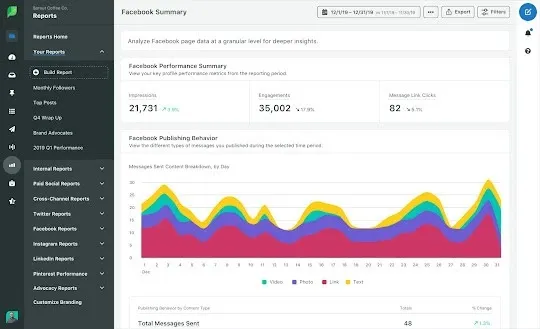Social Media Marketing
A social media marketing strategy is an overview of everything you want to do and want to do on social media. It directs your behavior and informs you of your success or failure.
A social media plan is a written document that outlines your social media goals, the strategies you will use to achieve them, and the metrics you will monitor to measure your success. Is.
List all your planned and existing social media accounts in your social media marketing strategy, along with each platform you use. These objectives should align with your company's overall digital marketing plan.
Finally, a solid social media strategy should define your team's duties and responsibilities, as well as your reporting schedule.
Step 1. Choose goals that align to business objectives
Set S.M.A.R.T goals:
The first step to creating a winning social media strategy is to set clear goals and objectives. Without goals, you have no way to measure success and return on investment (ROI).
Each of your social media marketing goals should be S.M.A.R.T Specific, Measurable, Achievable, Relevant and Time Bound.
Past: If you need examples of social media goals, we've got you covered.
Track meaningful metrics:
For inspiration, take a look at these social media metrics.
You may want to track different goals for different social media networks, or even have different uses for each network.
For example, if you use LinkedIn to drive traffic to your website, you would measure click-throughs. While Instagram vanity metrics like follower count and likes are easy to track, their true value is hard to prove. Instead, focus on things like engagement, click-throughs, and conversion rates.
For brand awareness, you can track the number of views of an Instagram story. And if you advertise on Facebook, cost per click (CPC) is a common metric of success.
Step 2. Learn everything you can
about your audience
Get to know your fans, followers, and customers as real people with real wants and needs, and you'll know how to target and engage them on social media.
When it comes to your ideal customer, you should know things like:
- Age
- Location
- Average income
- Typical job title or industry
- Interests
Here's a simple guide and template for creating audience/buyer personas.
Social media analytics can also provide a lot of valuable information about who your followers are, where they live, and how they interact with your brand on social media. This insight allows you to improve your strategy and better target your audience.
Step 3. Get to know your competition
Odds are, your competitors are already using social media, and that means you can learn from what they're doing.
Conduct a competitive analysis:
Competitive analysis allows you to understand who the competition is and what they are doing (and not so well). You'll have a better idea of what's expected in your industry, which will help you set your social media goals.
It will also help you find opportunities.
One of your competitors may be dominant on Facebook, for example, but has put little effort into Twitter or Instagram. Instead of trying to lure fans away from a dominant player, you'll want to focus on social media platforms where your audience is lacking.
Use social media listening:
Social listening is another way to keep an eye on your competitors.
Search for the competitor's company name, account handles and other relevant keywords on social media. Find out what they're sharing and what others are saying about them.
As you track, you can see the change in how your competitors and industry leaders are using social media. You may discover new, exciting trends. You might even come across specific social content or a campaign that really hits the mark — or completely bombs.
Use this type of intel to improve and inform your social media marketing strategy.
Step 4. Do a social media audit
If you are already using social media, review your efforts so far. Ask yourself the following questions:
- What is working, and what is not?
- Who is engaging with you?
- What are your most valuable contributions?
- What networks does your target audience use?
- How does your social media presence compare to the competition?
Once you gather this information, you can start thinking about ways to improve.We've created an easy-to-follow social media audit template and metrics to walk you through each step of the process.
Step 5. Set up accounts and
improve profiles
Decide which networks to use
As you decide which social network to use, you'll also need to define your strategy for each. Angela Porcaro, social media manager at Benefit Cosmetics, told eMarketer: "For our makeup tutorials … we're all about Snapchat and Instagram Stories. Twitter, on the other hand, is nominated for customer service.”
All of this means that your social media marketing strategy should be a living document that you review and adjust as needed. Check it often to stay on track, but don't be afraid to make changes so it better reflects new goals, tools, or projects.






0 Comments